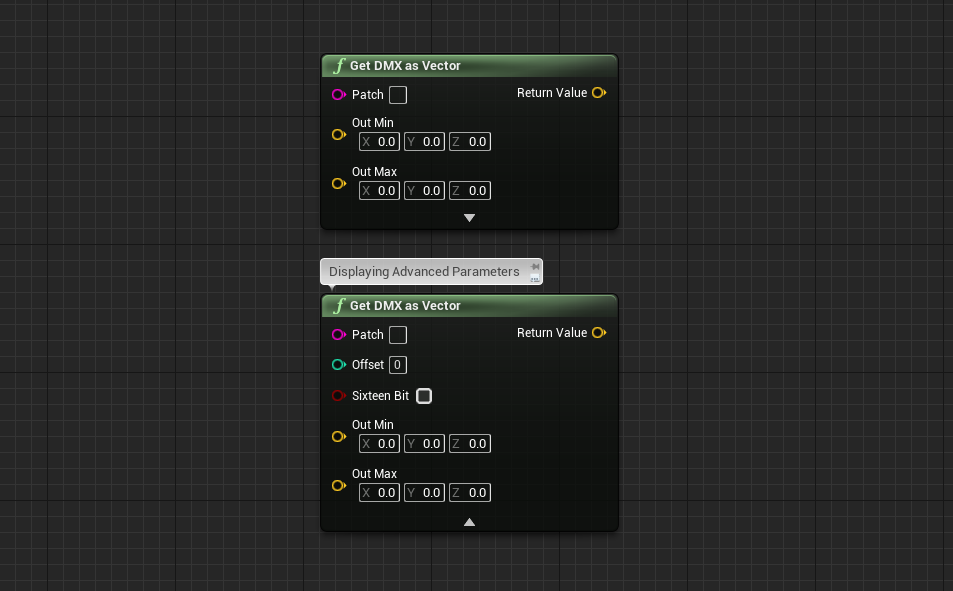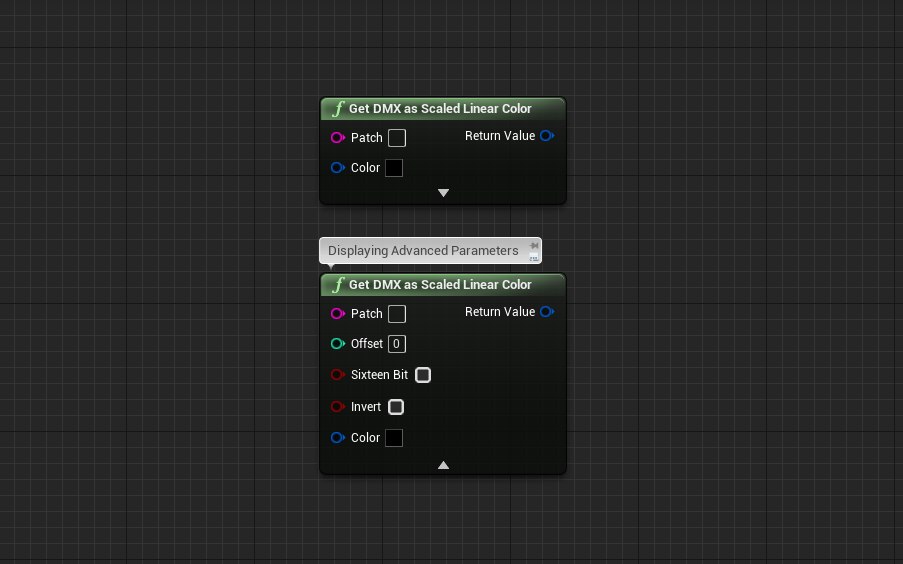Carbon has several built-in blueprint nodes to facilitate drive many different parameters in a custom blueprint with DMX easily. Common use cases include translating actors, adjust material parameters (i.e. Color), triggering particle systems, and much more. See our BP Snippets for premade examples of common DMX node networks. Nodes are grouped together in the “Carbon DMX” category of blueprint nodes.
Parse Patch
Splits well formatted incoming patch string into separate Universe and Channel integer values.
Get DMX as Integer
Get the value of the DMX patch address and return as an integer.
Supports 16-bit mode, channel offset, and a Min and Max range for remapping the DMX value to arbitrary output range of values (Defaults to 0-255).
Get DMX as Boolean (trigger)
Treat the DMX patch address as a trigger channel. By default, outputs TRUE when channel value is greater than or equal to 127.
Supports 16-bit mode, channel offset, and a custom threshold if a different value is desired for the channel to be considered triggered (TRUE).
Get DMX as Float
Get the value of the DMX patch address and return as a floating point (decimal) number. By default, outputs a decimal from 0.0 – 1.0.
Supports 16-bit mode, channel offset, and a Min and Max range for remapping the DMX value to arbitrary output range of decimal values (Defaults to 0.0-1.0).
Get DMX as Vector
Get the value of the DMX patch address and the next two channels (3 channels 8-bit, 6 channels 16-bit) return as a 3 dimensional vector (of floats) value. No default range is defined, user must define what range each component of the vector will have.
Supports 16-bit mode (fine channel is consecutive to the coarse channel), channel offset, and a Min and Max range for remapping the 3 DMX channels’ values to arbitrary output range of decimal values for each component of the vector (X,Y,Z).
TIP: Vector is convenient to use for any situation when a 3-tuple of values is needed, including translation, Euler rotation, combined RGB, etc. For sequencer recording it is recommended to use a Vector as the storage variable for any RGB color.
Get DMX as Scaled Linear Color
Scale a Color by the percentage value of the DMX patch’s value. i.e. Acts as an intensity channel for the specified Color value, channel value of 0 produces black, channel value of full outputs the color specified. Intermediate colors output a linearly interpolated value in-between.
Supports 16-bit mode, channel offset, defining a custom color to scale, and inverting the scaling (i.e. 0 outputs full intensity color, full outputs black).
TIP: Use four nodes to map arbitrary color channels (i.e. R+G+B+Amber), then add the outputs for a custom DMX Color Mix functionality.







